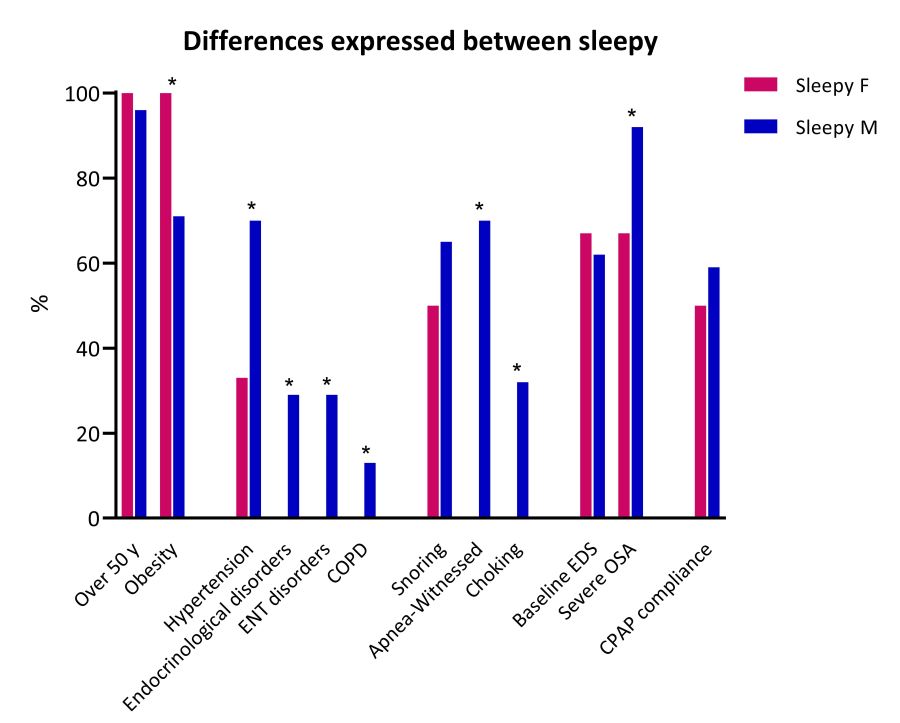Abstract
Background
Residual excessive sleepiness (RES) persists in a proportion of subjects with obstructive sleep apnea (OSA) despite continuous positive airway pressure (CPAP) treatment. To date, it is known that males and females sleep differently and have different sleep alterations, but the difference in RES has not been investigated.
Aims and objectives
To investigate whether there are gender differences involved in the development of RES.
Methods
A retrospective observational study was conducted on 157 consecutive subjects (125 males and 32 females) with moderate-severe OSA treated by night-time CPAP for 1-year between 2019-2022. Clinical and sleep data were collected and gender differences were investigated. RES was defined as an Epworth sleepiness scale (ESS) threshold >10 points.
Results
At 1-year of CPAP treatment, 25% of males reported RES compared to 13% of females (p=0,03) , which had greater adherence to CPAP (p=0,008).
Overall, sleepiness was significantly reduced in both sexes after 1-year of CPAP treatment.
By analysing RES, it was noticed that sleepy females were more obese than sleepy males (p=0,004). Conversely, sleepy males reported more OSA-related symptoms and had experience of more associated diseases (Figure).

Conclusion
The study seems to identify two sleepy phenotypes: symptomatic male with multimorbidity and asymptomatic obese female. Further research should be carried out to confirm our findings on larger population samples.